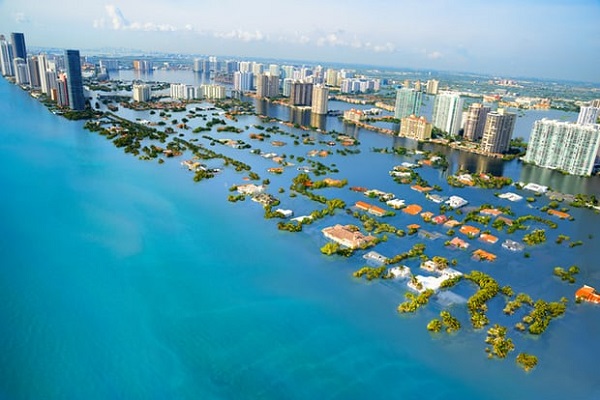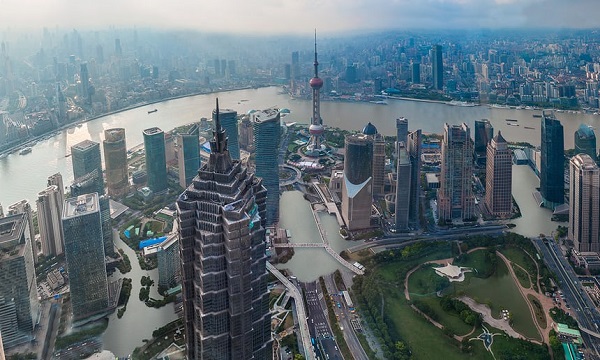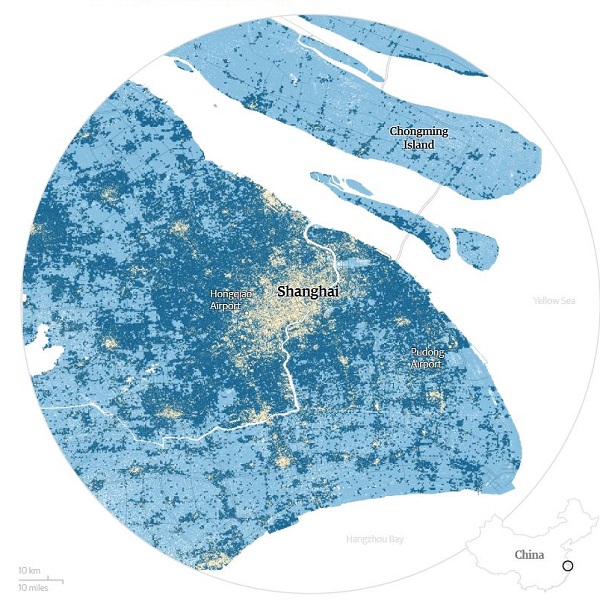1. Warming could soon exceed 1.5°C
The UK Met Office has warned that temperatures could break through the 1.5°C threshold within five years.
- The 1.5C threshold was set at Paris as an ambitious target because scientists fear that a world warmer than that would be susceptible to ever wilder climactic events that in turn would precipitate greater drought, habitat loss, food insecurity and mass migration.
The UN Environment Program in its annual emissions gap report, published last October, said government commitments were only a third of what was needed.
2. David Spratt and Ian Dunlop take a look at where we are at
If you want the scary truth, take a look at Do we have the capability to reverse global warming within a meaningful timeframe? where David Spratt and Ian Dunlop take a look at where we are at.
The answer is effectively “no”. Here are some quotes:
- Even going to zero emissions fast still means we fly past 1.5°C of warming, and get close to 2°C. Prof. Michael Mann explains: “We’ve already expended the vast majority of the budget for remaining under 2°C. And what about 1.5°C stabilization? We’re already overdrawn.”
- without solar radiation management — replacing anthropogenic aerosols from fossil fuel use with anthropogenic aerosols distributed by planes — it will be difficult to avoid hitting 2°C no matter what emissions path we take, and impossible not to overshoot 1.5°C significantly.
- Our current global emission trajectory would lead to a temperature increase in the 4-5°C range, a world which would be “incompatible with an organised global community”, with global population dropping from seven billion to below one billion as the impact of climate extremes takes effect.
The climate is already dangerous and tipping points are being brought into play, which could take the matter effectively out of our hands.
- “Anyone who considers economic growth can continue indefinitely in a finite system is either a madman or an economist.”
3. Sea level rise is speeding up
Speeding up just as expected, according to a new study.
- The study, by US scientists, has calculated the rate of global mean sea level rise is not just going up at a steady rate of 3mm a year, but has been increasing by an additional 0.08mm a year, every year since 1993.
If the rate of change continues at this pace, global mean sea levels will rise 61 centimetres between now and 2100, they report today in the journal Proceedings of the National Academy of Sciences.
This projection is roughly in agreement with the Intergovernmental Panel on Climate Change (IPCC) 5th Assessment Report (AR5) model projections.
However, I think most scientists working on sea level rise expect the real figure to be greater than that because ice sheet decay can’t be fully taken into account. Back in November 2016 in Ice sheet decay spells danger from sea level rise I reported on a study using a model coupling ice sheet and climate dynamics calibrated against Pliocene and Last Interglacial sea-level estimates:
- A new study suggests we could get close to two meters in total by 2100. Moreover the melting of ice on Antarctica alone could cause seas to rise more than 15 meters by 2500.
I’ll stick with that.
4. From Miami to Shanghai: 3C of warming will leave world cities below sea level
Cities, especially in Asia will be hit by sea level rise in a 3°C. Here’s what the crystal ball says Miami will look like:

Here’s Shanghai:

This article has interesting maps, including Shanghai:

The Chinese government is not stupid, but I’m not sure the same can be said for the US.
- The European Union will refuse to sign trade deals with countries that do not ratify the Paris climate change agreement and take steps to combat global warming, under a new Brussels policy.
5. New Hope Acland coal mine expansion
Queensland’s environment department rejected environmental approval for expansion of the company’s New Acland mine casting doubt on the future of the nearly $1 billion expansion project with approximately 300 employees and 500 contractors currently working at the existing Darling Downs mine which will soon run out of coal.
- New Hope lost its case in the Land Court in 2017, when the court recommended against the coal mine’s expansion into agricultural land, mainly due to uncertainty over the impact on groundwater supplies.
A judicial review of the Land Court decision, applied for by New Hope, will be heard in the Queensland Supreme Court in March.
I understand that the minister can nevertheless approve the mine, in spite of the Land Court ruling and departmental advice. Around 2100 indirect jobs in the local area around Oakey are said to depend on the mine. I can’t find any evidence of the minister saying anything. The silence is deafening.


Brian (Re: 2. David Spratt and Ian Dunlop take a look at where we are at)
Has there been any media coverage of Spratt & Dunlop’s presentation? None that I have seen. All the focus is on Barnaby. It shows were our priorities are.
This post by Ugo Bardi on his blog Cassandra’s Legacy titled “How Big a Disaster Can Climate Change Be?” may be of interest. A bit of black humour at the end says it all:
And this also from Cassandra’s Legacy titled “The Energy Transition: Too Little, Too Late“, and “How to convince the public of the danger of anthropogenic global warming“.
This is an interesting video of a village in Indonesia. This is what life is like with knowledge but minimal technology. Extremely normal at a slower pace.
https://youtu.be/U-V7SVASrqw
Included are images of pretty awesome timber boats being made with very few tools.
Geoff Mlell:
That would work – provided Step 3(a) was implemented too,
“Place all unwise politicians, businessmen, the top 0.1% of the ignorant wealthy and a gaggle of easily-bought journalists into an escape-proof Detention Centre on the edge of the Antarctica sea-ice”; (issuing a second blanket would be optional). What? Me nasty? What gives you that idea?
Brian:
That’s not just Shanghai City – that’s a goodly swag of Jiangsu Province too; with a lot of Chejiang, Shandong and other provinces – and cities – not in that illustration rather more underwater than usual. I trust over 300 million Chinese learn to become very good swimmers
Brian,
The Post Carbon Institute published Shale Reality Check earlier this month, link here. It’s written by J. David Hughes, an earth scientist who has studied the energy resources of Canada for four decades, including 32 years with the Geological Survey of Canada as a scientist and research manager.
The last paragraph of the Executive Summary sums up the situation:
It will be interesting to see whether the EIA will revise their projections.
Graham, you can check it out on Firetree flood maps, but this image I have on file I think represents the Shanghai are with 7 metres SLR:
While you are there, take a look at Thailand, Vietnam, Cambodia, Myanmar and Bangladesh.
However, I think the vulnerability of China gives hope to the world.
The US is quite vulnerable too, eg. San Francisco, Texas, Louisiana, Miami and all the way up the east coast.
Geoff, thanks for the link. If the US is using oil on a large scale in 2050 we’ll all be in trouble.
Thanks Brian: I hadn’t even thought about the potential seawater contamination of several important freshwater lakes in eastern China.
On oil. We are burning up an irreplaceable lubricant and an important industrial feedstock. Solar-electric bicycles and trishaws/ cyclo-mays might be the way to go, at least in urban areas.
…or maybe Sweden’s crowd funded 300 klm EV Uniti, with a price tag of something like ($?)15,000
https://youtu.be/Kgt-JkCuWh0
Arctic mid Winter experiencing above zero temperatures while Tony Abbott claims Global Warming is for the best.
https://www.brisbanetimes.com.au/world/north-america/arctic-temperatures-soar-25-degrees-above-normal-in-the-dead-of-winter-20180222-p4z1bh.html
https://www.gizmodo.com.au/2017/10/his-arguments-hold-less-substance-than-his-speedos-experts-destroy-tony-abbotts-stance-on-climate-change/